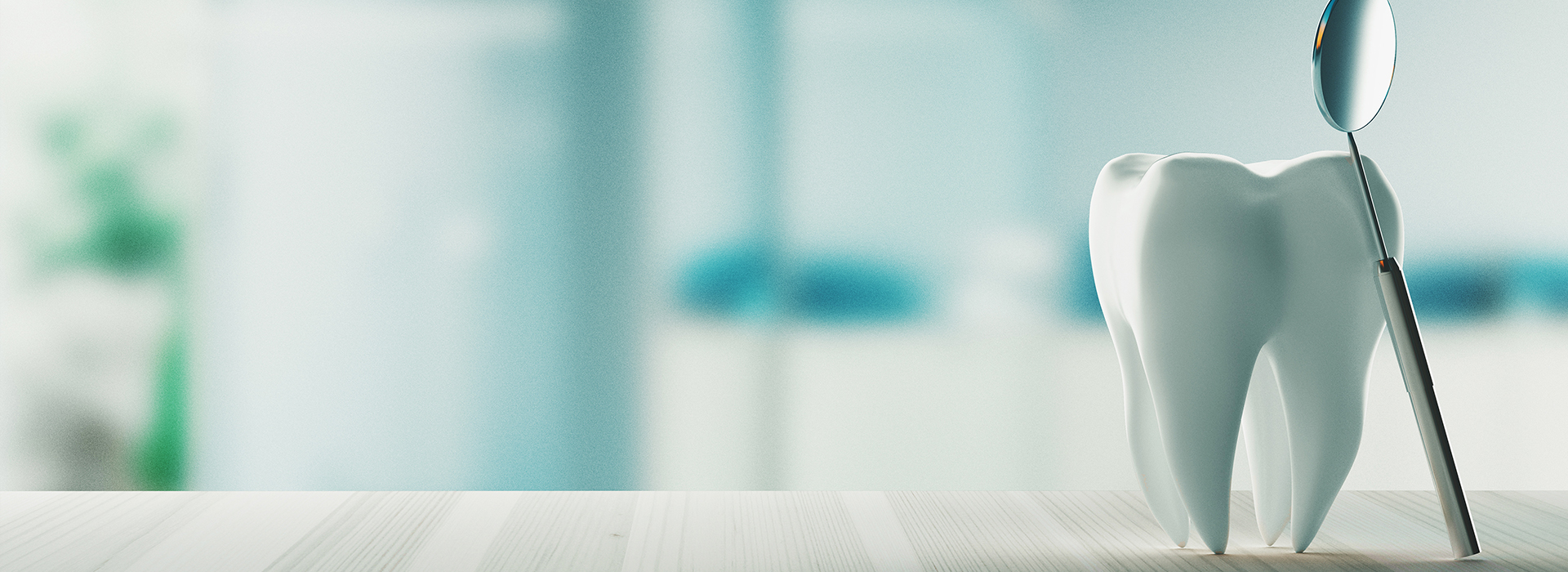
Our Office
2615 West 24th St.
Plainview, TX 79072
Existing Patients: (806) 296-6057
New Patients: (806) 217-7472
Visit Us Online

At Texas Super Smiles for Kids, we take a practical, patient-focused approach to restoring teeth that are weakened by decay, injury, or years of wear. Modern dental ceramics let us rebuild teeth so they look natural and perform reliably — without relying on metal. Our goal is to provide solutions that balance strength, comfort, and a lifelike appearance while respecting each patient's individual needs and preferences.
Tooth enamel is remarkably strong, but it is not invincible. When a large portion of a tooth is lost to cavities, fracture, or repeated grinding, a simple filling may not restore full form or function. In these situations, a full-coverage restoration — commonly called a crown — is often the more durable and predictable choice. Crowns protect the remaining tooth structure while restoring chewing function and appearance.
Advances in ceramic materials have transformed crown therapy. Today's all-ceramic crowns combine improved strength and greater translucency, which lets us match the optical qualities of natural teeth. That means patients no longer have to compromise appearance for durability. The right ceramic crown can provide a long-lasting, metal-free option that blends seamlessly with the rest of your smile.
Choosing a crown over a filling is usually about long-term stability. If the remaining tooth structure is thin, if a tooth has a large existing restoration, or if the tooth has been weakened by root canal therapy, a crown can provide full coverage and redistribute biting forces so the tooth is less likely to fail in the future. That predictability is a major reason clinicians recommend crowns in these cases.
Crowns are also the standard way to restore teeth that need to support other prosthetics. For example, a crown may be placed over an implant to replace a missing tooth, or it may serve as an anchor (abutment) for a fixed bridge when adjacent teeth carry a load. In short, crowns play many roles in restorative dentistry beyond simple cosmetic repair.
Other situations where a crown is often preferred include teeth with recurrent fractures, heavily stained or misshapen teeth that affect smile aesthetics, and teeth whose bite relationships need to be corrected for comfort and function. Your clinician will evaluate both functional demands and cosmetic goals before recommending a crown as the best option.
To rebuild a tooth with extensive decay or structural loss
To replace a large or failing filling where remaining tooth strength is limited
To restore a dental implant or to serve as an abutment for a bridge
To protect a tooth after root canal therapy or to correct bite-related wear

All-ceramic crowns are designed to replicate the translucency, color depth, and surface texture of natural enamel. Unlike older crown types that used a metal core under a porcelain layer, contemporary ceramics are engineered to let light pass and reflect in ways that mimic real teeth. This optical harmony makes ceramic crowns especially valuable in visible smile zones.
Because ceramic materials can be milled more precisely and bonded with advanced adhesives, we can often preserve more of the natural tooth during preparation. Thinner ceramic restorations require less reduction of healthy tooth structure while still providing excellent strength. That conservative approach helps maintain tooth vitality and long-term health.
Ceramics are also biocompatible and tend to be gentle on surrounding gum tissue. Without a metal margin at the gumline, ceramic crowns avoid the dark lines sometimes seen with older metal-based restorations. Many ceramic systems are resistant to staining and retain their color over time, which supports a naturally attractive result for years when combined with proper care.
Natural light transmission and lifelike translucency
Minimized tooth reduction with thinner, stronger materials
Metal-free construction that is kind to gum tissue and avoids visible margins
High resistance to surface stains and long-term color stability

Not all ceramics are identical, and selecting the appropriate material is as important as the clinical technique used to place the crown. Back teeth that endure heavy chewing forces may benefit from higher-strength ceramics, while front teeth that carry more cosmetic demand often require materials with superior translucency and shade-matching qualities. A tailored choice balances strength and aesthetics.
Common contemporary options include lithium disilicate, which offers a pleasing blend of strength and esthetics; leucite-reinforced porcelain, which provides excellent color and finish for visible teeth; monolithic zirconia, prized for its exceptional durability in high-stress areas; and high-translucent zirconia, which brings improved appearance while maintaining robust performance. Each material has specific advantages depending on clinical needs.
Your dentist will consider the tooth’s location, bite dynamics, the amount of remaining tooth structure, and aesthetic goals before recommending a material. Where appropriate, we use digital imaging and shade-matching tools to plan restorations that harmonize with adjacent teeth. The objective is a crown that looks natural, functions well, and requires minimal future intervention.
Lithium disilicate — excellent for anterior restorations with good strength
Leucite-reinforced porcelain — excellent color matching for visible teeth
Monolithic zirconia — ideal for posterior teeth where strength is crucial
High-translucent zirconia — a compromise of strength and improved aesthetics

The process for placing a ceramic crown usually spans two main visits, though modern digital workflows can sometimes shorten that timeline. During the initial visit, the tooth is evaluated and prepared — softened or damaged areas are removed, and the tooth is shaped to receive the crown. Digital scans or traditional impressions are taken to accurately capture tooth contours and bite relationships.
In many cases a temporary crown is placed to protect the prepared tooth while the final restoration is fabricated. Fabrication may occur in an on-site milling lab or at a trusted dental laboratory; either way, careful communication between clinician and technician ensures the final crown meets functional and aesthetic targets. At the final appointment, the temporary is removed and the definitive crown is tried in, adjusted, and cemented or bonded in place.
After placement, routine care is straightforward: maintain good oral hygiene with brushing and flossing, and visit the dental team regularly for professional evaluations and cleanings. Avoid habits that place undue stress on the restoration, such as biting non-food items or using teeth as tools. With appropriate care, ceramic crowns can provide many years of dependable service.
Our practice combines modern materials, precise techniques, and a patient-centered approach to deliver ceramic crowns that meet both functional and cosmetic goals. We emphasize careful planning — from evaluating bite forces to selecting the best ceramic — so the chosen solution fits each patient's lifestyle and expectations. When appropriate, we use digital scanning and shade-matching to enhance accuracy.
We understand that a crown is a long-term commitment, and our team prioritizes clear communication about what to expect at each stage of treatment. Comfort and safety are central to our care: for patients who experience anxiety or require more extensive treatment, sedation options are available to help make appointments manageable and productive.
If you are considering a ceramic crown or want to learn how a crown might improve function, protect a vulnerable tooth, or enhance the appearance of your smile, we encourage you to reach out. Our team will review your options, explain the recommended treatment in plain terms, and help you decide on the approach that best supports your oral health and personal goals. Contact us for more information.
A ceramic crown is a full-coverage dental restoration made entirely from dental ceramic materials designed to replace the natural outer surface of a damaged tooth. It fits over the prepared tooth structure to restore shape, strength, and function while creating a natural-looking appearance. Ceramic crowns are engineered to mimic the translucency and color of natural enamel for seamless cosmetic results.
Ceramic crowns differ from partial restorations because they cover the entire visible portion of the tooth above the gumline, providing protection against further fracture and wear. Modern ceramics combine strength and aesthetics, allowing them to be used in many areas of the mouth. Because they are metal-free, ceramic crowns also avoid the dark margins sometimes seen with metal-based restorations.
A ceramic crown is often recommended when a tooth has lost a significant amount of structure from decay, trauma, or large restorations that make a filling inadequate. Dentists also suggest crowns to protect teeth after root canal therapy, to restore dental implants, or to serve as the support for a dental bridge. Crowns can additionally address a single tooth's cosmetic concerns when discoloration, misshaping, or wear affects the smile's appearance.
Clinical decision making considers the tooth's location, biting forces, and aesthetic needs before recommending a ceramic crown. If the remaining tooth structure is insufficient to support a filling, a crown provides full coverage and reinforcement. Your dentist will review alternative options and explain why a crown best meets your functional and cosmetic goals.
Ceramic crowns are made entirely of ceramic materials and contain no metal substructure, while porcelain-fused-to-metal (PFM) crowns include a metal core layered with porcelain. The absence of metal in ceramic crowns eliminates the risk of a visible metal margin at the gumline and generally provides superior light transmission for a more lifelike appearance. PFMs may offer strong support under heavy forces, but advances in ceramic technology have narrowed the strength gap for many clinical situations.
Because ceramic crowns are metal-free, they are often a preferred choice where aesthetics are a primary concern, such as on front teeth and visible areas of the smile. Ceramic materials also tend to be more biocompatible with soft tissues, reducing the potential for gray discoloration near the gumline. Your dentist will recommend the material that best balances strength and appearance for your specific tooth.
Common ceramic materials used for crowns include lithium disilicate, leucite-reinforced porcelains, and various forms of zirconia ranging from monolithic to high-translucency formulations. Each material has distinct properties: some prioritize high strength for posterior biting forces, while others emphasize translucency and color matching for anterior teeth. Material selection depends on the tooth's position, the patient's bite, aesthetic requirements, and the amount of remaining tooth structure.
Your dentist will evaluate functional demands and cosmetic goals to recommend the most appropriate ceramic. Digital design and laboratory milling technologies allow precise customization of shape and shade to blend with adjacent teeth. The goal is to select a ceramic that provides reliable performance while meeting the desired visual outcome.
The ceramic crown process typically begins with a thorough examination, diagnostic imaging, and a discussion of treatment goals to create a customized plan. During the first clinical appointment the tooth is prepared by removing decayed or compromised tissue and reshaping the surface to allow crown placement; an impression or digital scan is then taken for fabrication. A temporary restoration protects the prepared tooth while a dental laboratory or an in-office milling unit fabricates the final ceramic crown.
At the final appointment the temporary is removed, the fit and shade of the ceramic crown are evaluated, and adjustments are made for proper bite and contour. The crown is then cemented or bonded using an appropriate adhesive protocol to achieve a secure, durable connection. At Texas Super Smiles for Kids our team follows careful protocols to ensure accurate fit, comfortable seating, and patient comfort throughout the process.
Caring for a ceramic crown follows the same daily hygiene practices recommended for natural teeth: brush twice a day with a fluoride toothpaste and floss once daily to remove plaque from the crown margins. Maintaining good oral hygiene reduces the risk of decay at the tooth-crown interface and helps prevent gum inflammation that can affect the restoration's long-term health. Regular professional cleanings and exams allow the dentist to monitor the crown and surrounding tissues for early signs of issues.
Avoid using your teeth as tools and minimize habits such as chewing ice or very hard objects to reduce the risk of chipping. If you have a history of bruxism or grinding, discuss protective measures such as a nightguard with your dentist to protect the crown and natural teeth. Promptly report sensitivity, looseness, or discomfort so your provider can address potential problems before they progress.
Ceramic crowns can provide many years of reliable service when properly designed, placed, and maintained, but individual longevity varies based on several factors. The crown's lifespan depends on the chosen material, the quality of tooth preparation and bonding, the patient's bite and oral habits, and adherence to daily oral hygiene and professional care. Proper occlusal adjustments and periodic maintenance reduce wear and the likelihood of mechanical complications.
Other influences include the health of the supporting tooth and surrounding gum tissue, as well as any history of dental trauma or heavy functional stresses. Regular dental visits allow the team to assess crown condition, repair minor issues early, and extend the restoration's useful life through preventive care and timely interventions.
Yes, ceramic crowns are an excellent option for patients who have allergies or sensitivities to metal because they are entirely metal-free. The inert nature of modern dental ceramics reduces the risk of allergic reactions and can be kinder to the surrounding soft tissues. For patients who have experienced irritation with metal-based restorations, ceramics provide a biocompatible alternative that preserves both function and aesthetics.
Before treatment, your dentist will review your medical and dental history to confirm suitability and rule out other concerns that could affect restoration success. If special material considerations are needed due to allergies or sensitivities, the dental team will select ceramics and bonding agents that support safe, predictable outcomes.
Ceramic crowns are primarily used for permanent teeth and are chosen when aesthetics and biocompatibility are priorities, but they are less commonly placed on primary (baby) teeth. Pediatric restorative choices often favor materials that are durable, quick to place, and appropriate for the expected life span of the primary tooth; stainless steel or zirconia pediatric crowns can be options depending on the clinical situation. As children mature and permanent teeth erupt, ceramic restorations become more relevant for long-term aesthetic and functional outcomes.
In the pediatric and family setting, individual assessment guides material selection to balance esthetic desires with clinical practicality. In our pediatric practice at Texas Super Smiles for Kids the team evaluates each child’s needs, behavior, and dental development to recommend the safest and most effective restoration for their age and condition. When ceramic restorations are appropriate for older adolescents or permanent teeth, the same planning and care standards used for adults apply.
Common risks associated with ceramic crowns include sensitivity after placement, marginal leakage if the cement seal is compromised, and the potential for chipping or fracture under extreme forces. In some cases the underlying tooth may require additional treatment, such as root canal therapy, if symptoms of pulpal involvement develop. Careful treatment planning, precise tooth preparation, and appropriate material selection help minimize these risks.
If a crown chips or becomes loose, the dentist will evaluate whether repair, re-cementation, or replacement is the best course of action based on the extent of damage. Ongoing follow-up care and prompt attention to unusual symptoms allow most complications to be managed effectively and preserve the long-term success of the restoration.
